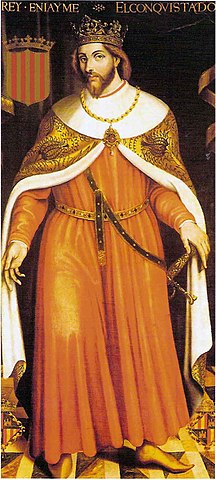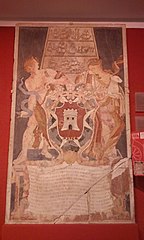Prehistoric Menorca
Archaeological remains have shown that the island of Menorca was populated at the beginning of the Bronze Age , probably by inhabitants of the Iberian Peninsula and Sardinia.
On the island a culture similar to that of his older sister, the island of Mallorca, was influenced, influenced by the culture of the Argar and various Mediterranean currents.
If something characterizes Menorca are its megalithic monuments . The so-called Talayotic culture left three typical buildings in Menorca: talayots, navies and taulas.
The talayots , of which there are more than 250 in a dozen settlements, had several functions: surveillance, funerary or ritual monument, or mere residence of the village leader.
The navetas are almost exclusive funerary constructions of Menorca. To emphasize the one of Es Tudons, the one of Biniac-L´Argentina and the one of Rafal Rubí.
The taulas , exclusive to Menorca, are composed of two large T-shaped stones, one vertical and one horizontal and abound throughout the island: Talatí de Dalt, Torre d’en Galmés, Torralba d´ in Salort, Binimassó, Binissafullet, Comerna de Sa Garita, San Agustí Vell, So na Cacana, Son Catlar, Torrellafuda, Torretrencada, and Trepucó, among others.


From the Phoenicians to Muslims
After these first settlers the Phoenicians and the Greeks would arrive on the island. Legend has it that the Phoenicians called Menorca as Nura Island, which meant “land of fire” and the Greeks Meloussa “place of cattle.”
In 205 BC, the Carthaginians at the head of General Magón incorporated the island into their empire and their general gave their name to the city he founded, Mahón.
In 123 BC, Quinto Cecilio Metelo conquered Menorca for Rome. “Portus Magonis,” as the Romans called the port of Mahon, became an important strategic point and Mahón became a thriving city .
In 427, Menorca became dependent on the vandals of North Africa and in 534 it was conquered by Flavio Belisario for the Byzantine Empire.
The Muslim era
In the year 903 the Arabs conquered the island for the Caliphate of Cordoba, where they would remain for almost four centuries. Citadel, which they called “Jamma”, became the capital of the island.
The Arab influence on the idiosyncrasy and toponymy of the island was enormous . Menorcan love for horses comes from that time (as is evident in their parties).
Menorca was part of the Muslim world until Almohad Empire was defeated by Jaime I the Conqueror.
Jaime I allowed the Taifa of Menorca or the Kingdom of Menorca to arise in Menorca in exchange for paying a vassalage. In this way Menorca, for a few years, was an “independent” kingdom.
On January 17, 1287, the troops of Alfonso II the Liberal defeated those of Menorca’s last almojarife, Abu Umar, and incorporated the ephemeral Kingdom of Menorca to the Kingdom of Aragon . The Muslim population was enslaved and gradually deported and, instead, the island was repopulated with Catalans .


Menorca in the Kingdom of Mallorca and the Kingdom of Aragon
After the conquest by the Kingdom of Aragon, the history of Menorca runs parallel to that of Mallorca .
From 1298 to 1343 he was part of the Kingdom of Mallorca.
In 1343 Pedro IV the Ceremonious defeated the troops of the Kingdom of Mallorca and fully incorporated the islands into the Kingdom of Aragon.
During its dependence on the Crown of Aragon, Menorca benefited from the commercial and maritime power that the Crown extended throughout the Mediterranean.
Since the beginning of the fifteenth century Menorca lived its peculiar war of the Germanies, the struggles between forensic “nobles” and “peasant” citizens, and, in addition, was at the mercy of the blackberry razzias, which resulted in the island almost depopulate.
Menorca in the Kingdom of Spain
After the union of the Crown of Aragon with that of Castile, in the second half of the fifteenth century, Menorca joined the Kingdom of Spain .
After the capture of Tunisia by Carlos I, the island was sacked by the Berber corsairs.
In 1534 Mahón was sacked by the Turkish pirate Barbarroja and on July 9, 1558 Citadel was sacked by the pirate Mustafa Piali who destroyed the city and captivated 3,500 citizens as slaves.
Felipe II, to protect the island, ordered the construction of the fort of San Felipe at the entrance of the Port of Mahón and several defense towers on the coast, including that of San Nicolás in Ciudadela.
The seventeenth century was of general decline for Menorca due in part to the plague , the droughts , the threat of the Muslim pirates and the Own internal struggles.


English Menorca
In the 18th century the history of Menorca was really convulsive . It went from the hands of the English to those of the French and later to those of the Franco-Spaniards. Until the first years of the 19th century it did not return to Spanish hands.
In the War of Succession to the throne of Spain, Menorca inclined to Archduke Carlos, despite the opposition of an important part of the supportive citizens of Felipe V headed by General Dávila.
The supporters of Felipe V could not resist the attack of the English squadron commanded by General Laeke and, in September 1708, Menorca was conquered by the English.
By the Treaty of Utrech of 1713, Felipe V ceded Menorca to Great Britain, beginning the first English era, domain that would remain until 1756.
In 1756 it was conquered by the French under the command of the Duke of Richelieu and, seven years later, by the Treaty of Paris of 1763, it was returned to Britain. This second English stage lasted until 1782, when they were expelled by Franco-Spanish troops commanded by General Crillón.
From 1798 to 1802 again it was occupied by the English and, after the Treaty of Amiens, it was finally delivered to Spain.
During the English domination, Governor Kane moved the capital to Mahón and Menorca lived, especially the new capital, his best time due to the commercial expansion that was the presence in his port of the English navy and the English flag corsair ships.
From the 19th century to the present
In 1808, during the war against Napoleon, Menorca sided with Ferdinand VII.
After the war, the island received numerous Catalan refugees. However, from 1825, he suffered a strong emigration to Florida, the West Indies, South America and very significant to Algeria.
During the reign of Isabel II, in 1852, the Mola Fortress was built, which soon became a military prison and maintained this destiny until 1968.
At the end of the 19th century, shipbuilding and shoemaking eased the precarious situation of the island.
During the Spanish Civil War Menorca did not suffer great evils. It was on the part of the republican troops until already, at the end of the war, in February of 1939, it was taken by the national troops. There were executions until the Republicans controlled the island, in addition to an attempted landing by national troops in 1937 and also received bombings of Italian aviation.
In the twentieth century, the history of Menorca has continued to be marked by endemic emigration and the flourishing of the footwear and leather industry , jewelry and tourism.
The primary sector has been losing importance slowly and steadily.
The sale of footwear has fallen in recent years, although in the last decade and thanks to some brands of international prestige it has partially recovered. The jewelry has failed to adapt to the competition, mainly Asian, and is almost extinct.
Tourism has meant a radical social and demographic change for Menorca and is its main source of wealth, although part of the Menorcans consider it an aggression to their way of life and there are still voices against them.
The evolution of tourism will mark the future of the island. Making the objectives of the Biosphere Reserve statement compatible with tourism growth that respects its natural and ecological heritage is what will make Menorca a unique and differentiated destination .


